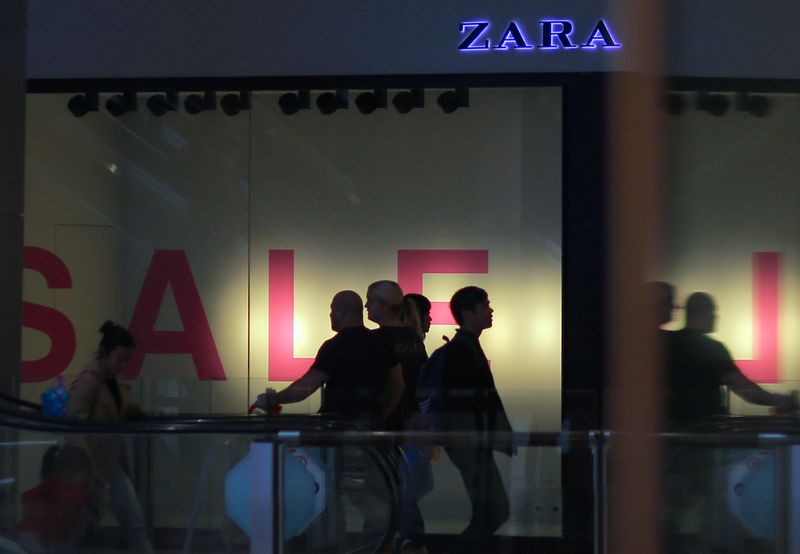Australia inflation slows in Q1, probably past the peak
2023.04.25 22:29

© Reuters. FILE PHOTO: Shoppers can be seen walking past a retail store displaying a sale sign at a shopping mall in Sydney, Australia, July 25, 2017. Picture taken July 25, 2017. REUTERS/Steven Saphore
By Wayne Cole
SYDNEY (Reuters) -Australian inflation eased from 33-year highs in the first quarter as the cost of living saw the smallest rise in more than a year, while core inflation dipped below forecasts suggesting less pressure for another hike in interest rates.
Investors reacted by lengthening the odds on the Reserve Bank of Australia (RBA) resuming raising rates at its May 2 meeting, having paused in April after a 10-hike streak.
Futures now imply only a 13% chance of a quarter-point rise in the 3.6% cash rate, while the local dollar shed early gains to stand at $0.6625.
Data from the Australian Bureau of Statistics on Wednesday showed the consumer price index (CPI) rose 1.4% in the March quarter, just above market forecasts of 1.3% but the smallest increase since late 2021.
The annual pace slowed to 7.0%, from 7.8%, suggesting inflation had finally peaked after two years of rapid acceleration in costs. For March alone, the CPI rose 6.3% on the year, down from 6.8% in February.
Crucially a closely watched measure of core inflation, the trimmed mean, rose 1.2% in the March quarter, nudging the annual pace down to 6.6% and under forecasts of 6.7%.
Still, core inflation remains far above the RBA’s target band of 2-3% and policy makers have been worried it could fuel a price wage spiral absent further tightening.
Details of the inflation report showed hefty increases for health services, education, gas and domestic holiday travel and accommodation. The only sectors seeing falls were clothing and household goods, a sign that goods inflation was finally slowing even as services stayed strong.
Unemployment is historically low at 3.5%, lifting annual wage growth to decade-high of 3.3%. The latter is still well below levels in the United States or UK and could offer the RBA some breathing space to wait and watch how the economy develops.
Much of the 350 basis points of tightening already delivered is only now being felt in mortgage payments and there is a risk consumer demand could crater more sharply than expected.








